Australian writer Kate Grenville discusses her career and portrait by Jenny Sages.
This video was produced with funds donated by Tim Fairfax AC.
Australian writer Kate Grenville discusses her career and portrait by Jenny Sages.
This video was produced with funds donated by Tim Fairfax AC.
I always knew I was going to be a writer; I never thought I would make a living of it. I didn't think there was such a thing as a career writer. I went to university and did Arts, majoring in English. I did an Honours in English. And I was very lucky I got a job at Film Australia which made documentary films. And I became a not particularly good film editor. And because they made documentaries it meant that it was unscripted. So basically somebody would go out and shoot miles and miles of footage, and you would have to find the story in the footage. In learning how to be an editor, I actually learned how to be a storyteller. And I learnt to trust, that if you produce enough fragments, and if those fragments are interesting in themselves, eventually, by jigsawing them together, in a hundred different ways, you wil arrive at a story. That was how I learned to write, by being a film editor. And I thank those people immensely.
I usually begin with something I don't understand. And so it's much more interesting to start with a question, than to start with an answer. Because that fuels the writing. Writing is a long, hard, often kind of boring process. There has to be a very powerful engine to get you to that desk every day. And one of the most powerful engines is curiosity: the need to understand something that you don't understand. And so what I ended up with at the end of a couple of years was a mass of research and a lot of bits and pieces of writing, not unlike making a documentary film. And that's basically how I write most of my books, in ignorance, fear and – often – despair.
When I met Jenny Sages I realised immediately that we were on the same wavelength as creators. Because she had no preconceptions; like me, she starts with a question, insofar as a painter can start with a question, and she allows the material to guide her. Which is exactly how I make art, so we had some wonderful conversations, which people who don't make art often find hard to understand, because they think it's a more sensible, process, and a more efficient process, than it actually is. It's a terrible muddle. You fling yourself in and you kind of swim for your life and you hope at the end of it you emerge with something.
So we sat together and had several sessions where she drew me, and took photographs. We went up to the Hawkesbury together, which is of course where the portrait is set, and when we found that spot by the river, and the little jetty, we both knew straight away that that was it. I took off my shoes, because I very much wanted to have that feeling of being barefoot on the land. And I felt wonderfully relaxed. And she drew me, and photographed me, and then went away and produced this wonderful portrait. I'm really pleased with it.
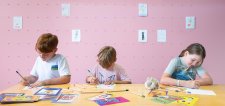
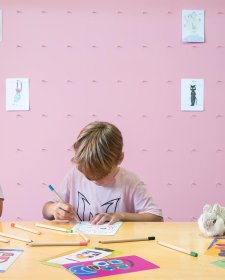

Drop into the Gallery any time for free creative activities inspired by artist Thom Roberts and his exhibition, The Immersive World of Thom Roberts.
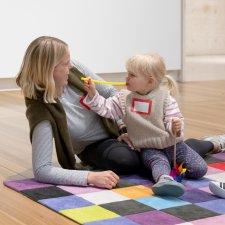
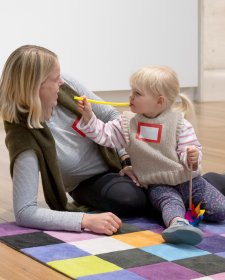
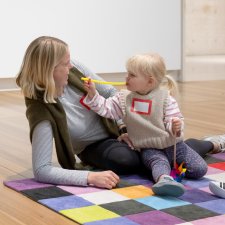
Join us for Portrait Play these school holidays as we explore portraits and music. Come and meet the people that live on our walls, discover musical instruments hidden in the portraits and get creative on your journey through the galleries.
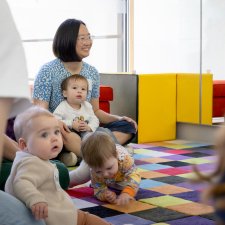
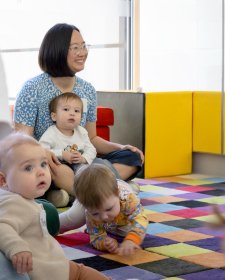
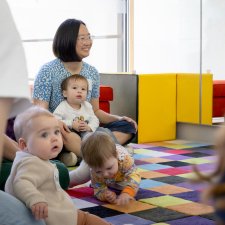
Do we have a treat for the smaller humans in your life! Little Faces is for babies and toddlers (with their grown up) to play, sing and have fun discovering a portrait together.